Scientific research is ever-expanding. When I write my supplement guides, I can only reference the research that has been completed; new research will always add to the picture.
Most of the time, this research simply adds to the consensus. If nothing changes except the overall strength of the consensus, it’s not worth updating each individual guide. It is, however, still important to go through the new research every year to see how if any of it changes or challenges what we know—and so every year I read what’s new so I can update you.
In alphabetical order of the supplements I’ve covered so far, here we go:
Beta-Alanine
There were seven relevant articles on beta-alanine published in 2016: five studies and two reviews. Of the studies, three examined the acute effects of beta-alanine, one studied the chronic effects, and one studied both the acute and chronic effects.
What did we learn?
- Beta-alanine is (still) most effective for exercise lasting from 1 to 10 minutes.1–3
- Beta-alanine is more effective for training power endurance than strength.4
- Beta-alanine may be more effective for lower-body exercise.4,5
The reviews show a similar trend: beta-alanine has a significant performance enhancing effect on exercise lasting from 1-10 minutes,6 but otherwise does not.7
In sum, nothing has changed from my original recommendation—but it’ll be important to keep an eye open for future studies that back up the evidence that beta-alanine more greatly affects the lower body. Since climbing performance does not hinge upon lower-body endurance, any consensus that beta-alanine is not effective for upper-body exercises will degrade my recommendation.
For now, beta-alanine remains a recommended supplement, especially for sport climbers (who will gain the most benefit).
Citrulline Malate
Citrulline malate is a relatively unstudied supplement, but one that shows promise. In 2016, three new studies were added to the archive: two positive, and one negative.
The two positive studies back up the results of earlier research, including increases in grip strength8 and increased reps during weight training.9 One study also noted an overall increase in peak power and explosive power [during a cycling test],8 but this might have been inferred from evidence that citrulline malate increases total reps performed and so isn’t necessarily novel.
On the other hand, a third study failed to demonstrate any benefit of citrulline malate for well-trained cyclists during a series of sprints or cycling to exhaustion.10 However, the researchers did note higher heart rates during exercise—an indicator of overall energy consumption (the faster your heart is beating, the more energy your body is consuming)—so it’s possible that the trial was set up in a way that would fail to demonstrate a benefit where a benefit did in fact exist.
It’s also possible that citrulline malate does less for muscles that are already aerobically strong (such as the Type I fiber-rich lower body) compared to muscles that are not. In this line of thinking, a muscle that is already aerobically efficient will have less to gain by increasing that efficiency further than a muscle that is not particularly efficient to begin with.
Of course, it’s also possible that citrulline malate doesn’t do anything notable at all!
At any rate, the weight of evidence (small though it still is) suggests a minor benefit to citrulline malate, and these three studies do little to change that. As more studies accumulate—and, crucially, are repeated—we will be better able to judge the supplement. In the meantime, citrulline malate remains an overall recommended supplement, with the same admonition that future studies could always revoke this status.
Creatine
The potential of creatine is mostly settled as far as anaerobic exercise goes—at this point, the questions I would like to see answered all relate to how creatine affects strength-to-weight ratio and smaller muscle groups. Even for these questions we have a solid basis for support, but it would still be nice to see some more studies confirm it. Unfortunately, they weren’t done last year, and probably won’t be done this year. Oh well.
The studies that were done don’t add much to what we know about creatine. One study was positive, showing an overall increase in power and decrease in the time to post-activation potentiation time.11,* A second study showed no benefit to creatine, taken with or without caffeine.12 A third showed no acute benefit to creatine.13
In regards to the third study, we know that creatine has no acute or short-term benefit; it’s not a drug like caffeine that has an acute pharmacological effect. Creatine only exerts its effects when it has sufficiently built up in the muscle, and that takes at least a week of loading or a month of continuous supplementing at a non-loading dose.
A similar stipulation could be made for the second study, whose participants followed a shortened loading protocol of only 5 days and with only 20 grams taken per day (approximately 84% of the dose currently recommended for loading for their average body weight). It could also reflect an odd testing protocol, which had the participants essentially do nothing for a week and then retest. Or it could just have been chance.
Since creatine has such a large body of research demonstrating a large benefit in terms of weight lifting, the results of these studies don’t change anything. And since we still don’t have any climbing-specific studies, we must extrapolate from these results. I’ve made a long argument for why I think creatine is overall positive, and I won’t rehash it here, but suffice to say creatine remains recommended for all climbers.
*Post-activation potentiation is a phenomenon whereby a muscle, once heavily loaded, becomes “primed” for explosive force production—like doing some weighted pull-ups on a campus board and then taking the vest off and campusing. In the study above, creatine decreased the amount of time it took to reach this peak potentiation after heavy loading, so you would need to wait less between your weighted pull-ups and the subsequent campus session.
Glucosamine & Chondroitin
I may, in the future, approach the yearly review of these two supplements differently. As it is, there is always new “research”, but the new research is poorly done, poorly interpreted, and industry-funded. The reality is that for most serious scientists, the potential of glucosamine and chondroitin has come and gone. Preclinical trials were promising, but later results were poor. Now, the only people doing “research” on these supplements are those who may stand to benefit from “proving” their efficacy: namely, the companies producing them. Regardless, I’ve already done the research this year, so let me show you what I mean.
There were three new studies and one review done on either glucosamine or chondroitin (or a combination) this year. All three studies were “positive” on the surface, but questionable after some critical analysis.
In the first study, glucosamine/chondroitin or placebo were supplemented for 24 weeks. The researchers found that during weeks 4-12, knee function was significantly better in the supplement group and that at week 12, the supplement group was doing much better in general.14 What isn’t mentioned is that the groups had similar results for all the other weeks.
Probability dictates that when comparing two similar groups over a long enough period of time, you will see at least a few minor periods of apparent divergence. In the study above, the authors took those minor, transient (but statistically significant) changes in knee function and overall function and highlighted them while downplaying or ignoring the majority of the rest of the trial, where no change was noted at all. If a supplement really works, we expect to see consistent benefit—not a couple of random peaks.
The second study was even more bogus. In it, the researchers compared the efficacy of one nutraceutical (MSM + boswellic acid) to glucosamine to see if the nutraceutical worked.15 This is like comparing two different formulations of placebo; we should expect them to perform equally, which is to say to not work at all. And, sure enough, both supplements worked equally well!—but since there wasn’t a control group it’s impossible to say whether they worked better than doing nothing at all or, perhaps, having the researchers psychically project the “feel-goods” to each individual’s joints. Fail.
The third study I covered in a recent quick post. Briefly, it found statistically significant improvements in both the treatment and the placebo group, with virtually no statistically significant difference between the two groups, and declared that the treatment worked because the participants’ condition improved.16 Never mind that the group taking sugar pills also improved, and by an equivalent amount—it’s clearly the supplement!
Finally, we have a review that notes what I stated at the beginning: preclinical results were promising, but methodological quality in many papers on these supplements is poor.17 As such, it’s not possible to definitively recommend any of these supplements. I would go further—I would say it is possible to definitively not recommend any of these supplements for climbing-related problems. You can read my full guide on glucosamine and chondroitin for more information on the rare conditions I might give the go-ahead for.
Sodium Bicarbonate
Compared to the other supplements, sodium bicarbonate had a big year. Not only did we get the usual assortment of positive and negative trials, we also saw an intriguing pattern that helps explain why the supplement appears to only be partially effective: individuality.
First, though, let me go over the more mundane research: there were two positive trials,18,19 two negative trials,20,21 one trial that showed how pre-exercise alkalosis decreased post-exercise oxygen uptake,22 and one odd trial that demonstrated how expectancy affects results (e.g., demonstrated the placebo effect).23 These studies do add to our understanding (yes, expecting a supplement to work will make it appear to work better), but don’t change much otherwise.
What is more interesting is the number of studies this year that demonstrated how individual the response to sodium bicarbonate is. What these studies essentially showed is that everyone should benefit from sodium bicarbonate, but that the time it takes to reach peak efficacy is variable from individual to individual.
For example, one study showed that some participants reached peak blood pH (actually their lowest blood pH) after only 10 minutes while others took upwards of 85 minutes.24 In practical terms, that means some people might obtain the greatest benefit only 10 minutes after sodium bicarbonate ingestion while others might require over an hour to get the same benefit! Looking at the data as a whole, however, a bimodal distribution did occur: most people peaked at either 65 minutes or 75 minutes.
A second study found no overall benefit to sodium bicarbonate, but when the participants were separated out large individual responses were found.23 Given the possibility of a large individual time-to-peak blood pH, this makes sense—only the individuals whose time-to-peak fit within the trial’s parameters would benefit, while those who peaked too early or too late would appear to be non-responders.
Finally, a review article stated that sodium bicarbonate timing must be tailored to the individual.25 Without good timing, an individual may experience only limited benefit or even no benefit at all.
This individual variability is interesting, but it also adds a layer of complexity to sodium bicarbonate supplementation. Without knowing what your own “peak time” is, you’ll never get the full benefit from sodium bicarbonate. True, the first study did suggest that you’re statistically more likely to fall into the 65-minute or 75-minute group, but there were also a large number of people who were not in those groups, and it’s just as likely that you’re one of them.
This creates a problem: since it’s out of the realm of possibility for most people to determine their peak blood pH, supplementing with sodium bicarbonate is clearly somewhat of a gamble. If it were an easy-to-take supplement free of adverse effects, I might say “go for it” and run that risk, but it’s not—it requires planning ahead, is hard to stomach, and commonly causes stomach problems.
Thus, given this new information, I would recommend against sodium bicarbonate. To be sure, it can improve performance if you time it right—but given the real possibility of getting it wrong (and not being able to subsequently tell), you’re more likely to experience stomach trouble with no benefit than to get that edge you’re looking for.
Conclusion
Most of my recommendations for supplements have not changed; this isn’t surprising since it takes a large amount of research to the contrary to move a scientific consensus. For the supplements without a large body of research to back them, the studies performed in the past year reinforce our current hypotheses.
In the case of sodium bicarbonate, however, my view has changed. It is still a potential ergogenic aid, but the amount of variance experienced by each individual makes it hard to time. Since it’s already a hard-to-take supplement with bad side effects, this makes it even less appealing. If it became possible for the average person to determine their optimal window of efficacy, I would again recommend sodium bicarbonate—but until then, it’s on the nope list.
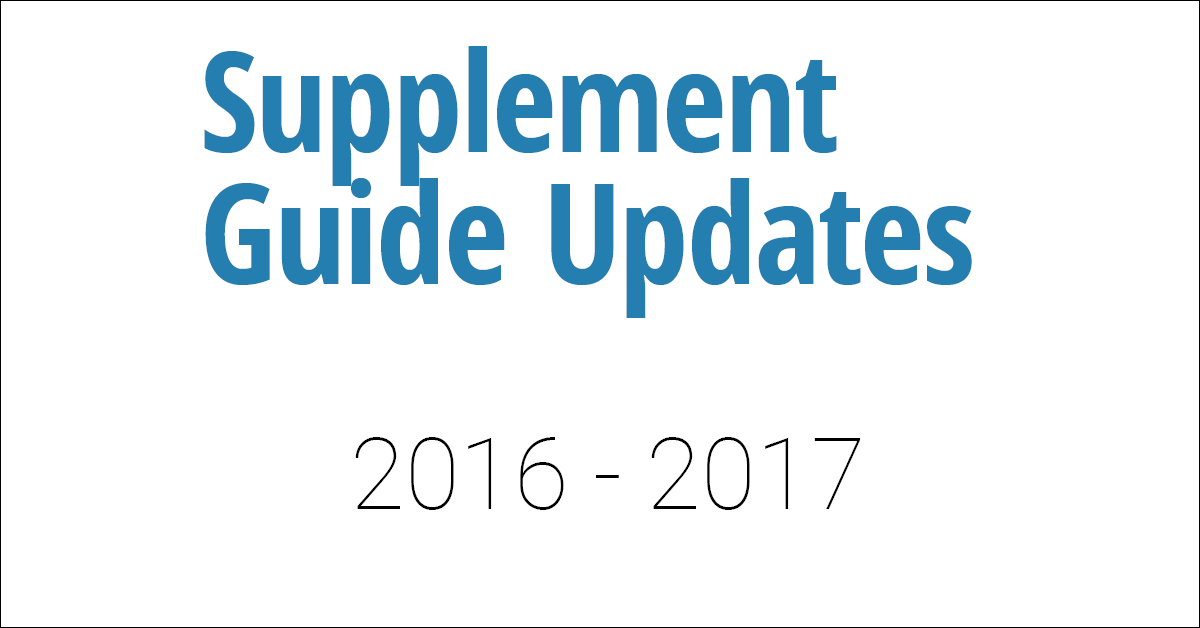

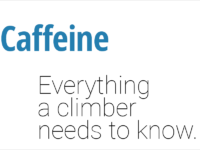
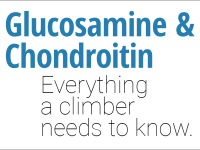
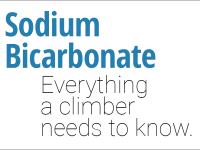
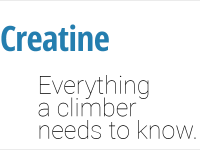
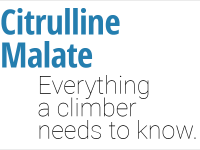
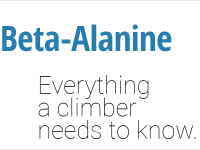






Love the updated research notes!